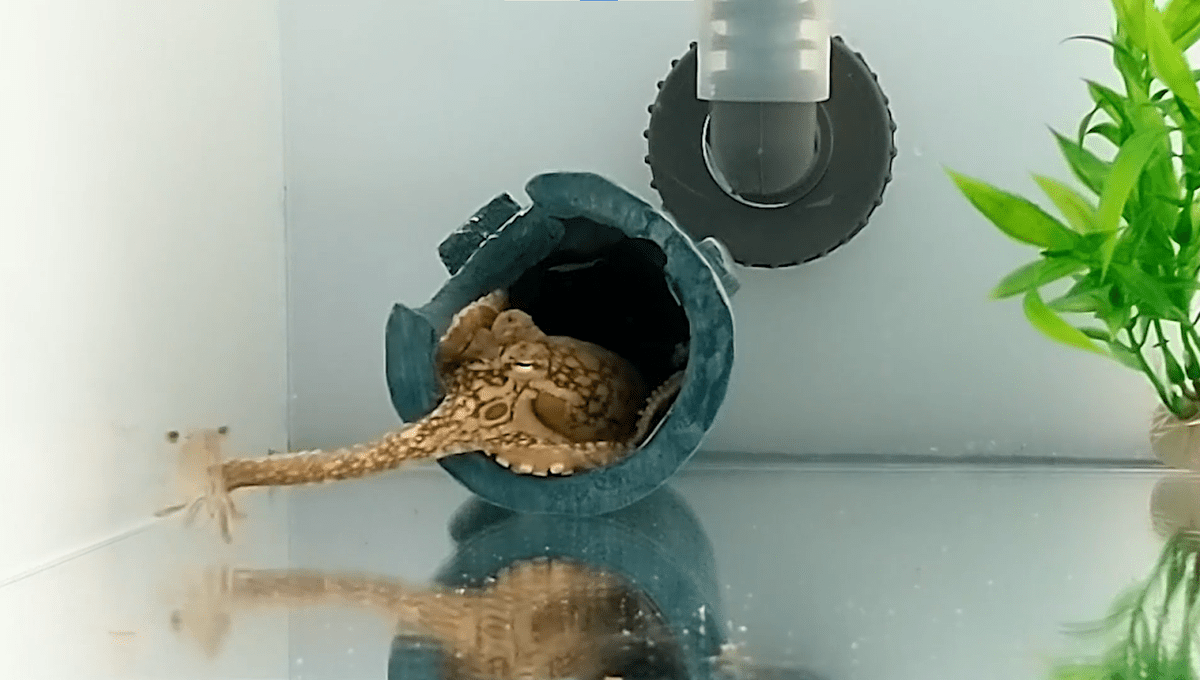
Octopuses are everyone’s favorite eight-armed underwater creature with complex brains and serious smarts. How they move, however, is no less than random, with those eight limbs making them look downright peculiar at times. Now, new research has looked at how octopuses use their arms for hunting and discovered some surprising results.
“Normally when you look at an octopus for a short while, nothing is repeatable. They squirm around… and just look weird in their exploratory movements,” said Trevor Wardill, an assistant professor in the College of Biological Sciences, in a statement.
It turns out the octopuses, just like people, have arms that they prefer using, and do not use each of their eight limbs equally. Octopus arms are numbered by starting in the middle, on each side of their bodies.
In a new study, researchers looked at how the California two-spot octopus (Octopus bimaculoides) hunted either fiddler crabs (Uca pugnax) or Pacific white shrimp (Litopenaeus vannamei). These two prey species were chosen as they exhibit different locomotion and escape strategies.
The team set up high-speed cameras to observe how the octopuses used their arms when hunting – and the octopuses used their arms differently depending which prey they were trying to catch.
When hunting both crabs and shrimp, the octopuses always attacked using the second arm from the middle. Crabs were caught with more aggressive techniques known as “parachuting”, where the octopus pounces on top of the prey, spreading its web and feeling for the prey below. Or the “snap-trap”, where two groups of arms move in two directions either side of the prey.
The shrimp were captured more slowly, with the octopuses leading with the second arm and then using the neighboring arms to assist after the initial contact was made. The octopuses also exhibited a technique known as “waving” thought to mimic the movement of sea algae to help deceive the shrimp, prevent it escaping, and ultimately aid its capture.
The octopuses also always used the arms on the same side as the eye viewing the prey. Octopus eyes have near 180 degree vision with each eye, but the fields do not overlap. Therefore it is likely that the octopuses wait until the prey is in the middle of their field of vision on one side before launching an attack. While octopuses may have a left and right handedness, what has actually been revealed is that two digits of each of the four pairs of arms are the equivalent for prey capture, and work in the same way on each side.
What surprised the researchers the most is how predictable the octopus hunting techniques were, especially given their seemingly random locomotion and movement. Researchers hope to use what they have learnt for a range of super cool applications including robotics and underwater exploratory vehicles.
“If we can learn from octopuses, then we can apply that to making an underwater vehicle or soft robot application,” said Wardill.
The paper is published in Current Biology.
Source Link: “Parachuting”, “Waving”, And The “Snap-Trap” — Octopus Hunting Techniques Revealed By High Speed Cameras.